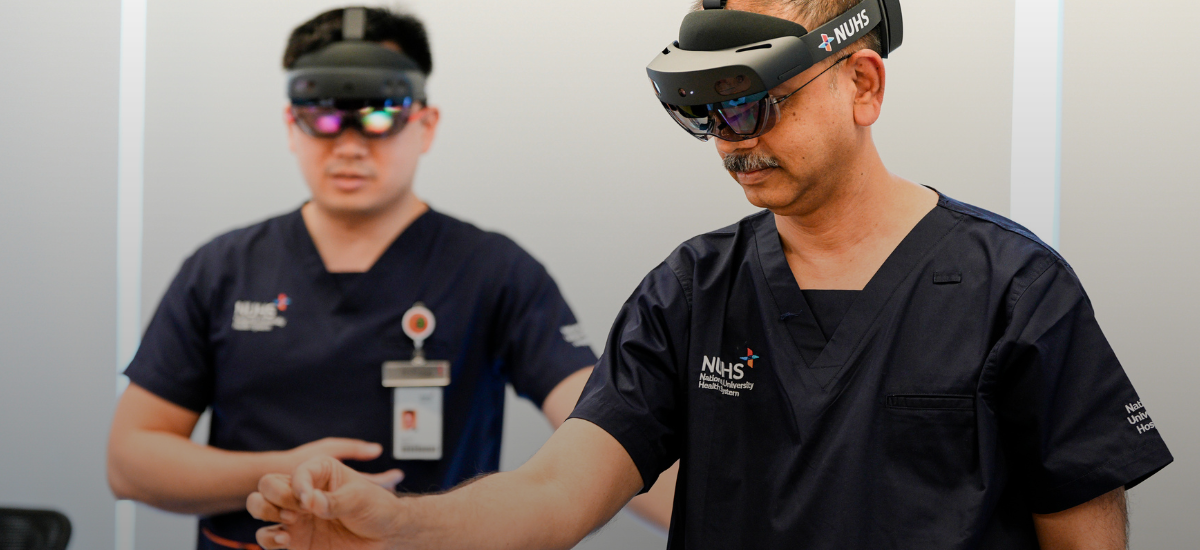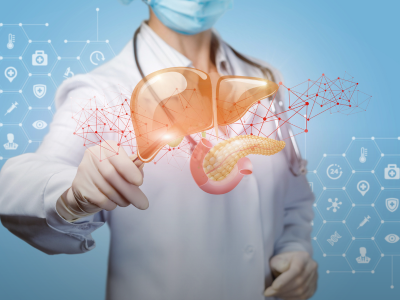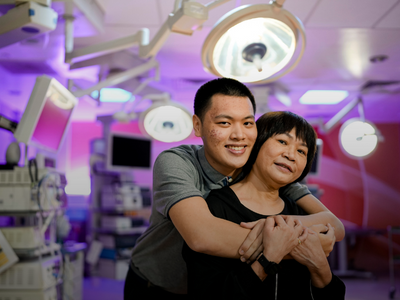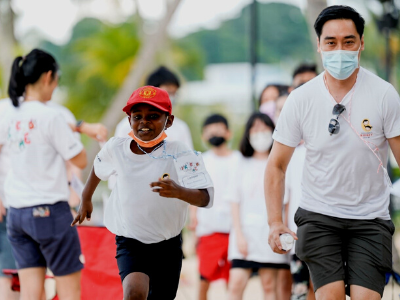Published on 5 June 2024
The utilisation of innovative mixed reality technology is helping surgeons at the National University Centre for Organ Transplantation (NUCOT) enhance their pre-surgical planning.
When she was less than a month old, Avira was diagnosed with biliary atresia, a rare illness which causes bile to be trapped inside the liver, resulting in damage and scarring to the organ.
If left untreated, biliary atresia – which occurs in approximately one in every 20,000 live births – can lead to liver failure, and eventually death.
Therefore, at just two months old, Avira had to undergo an operation known as the Kasai procedure. This surgical intervention involves removing the diseased bile ducts from the base of the liver, and establishing a new pathway for bile flow using a part of the child's intestine.
The operation, performed by Dr Vidyadhar Mali, a senior consultant at National University Hospital’s (NUH) Department of Paediatric Surgery in the Khoo Teck Puat – National University Children’s Medical Institute (KTP-NUCMI), was successful.
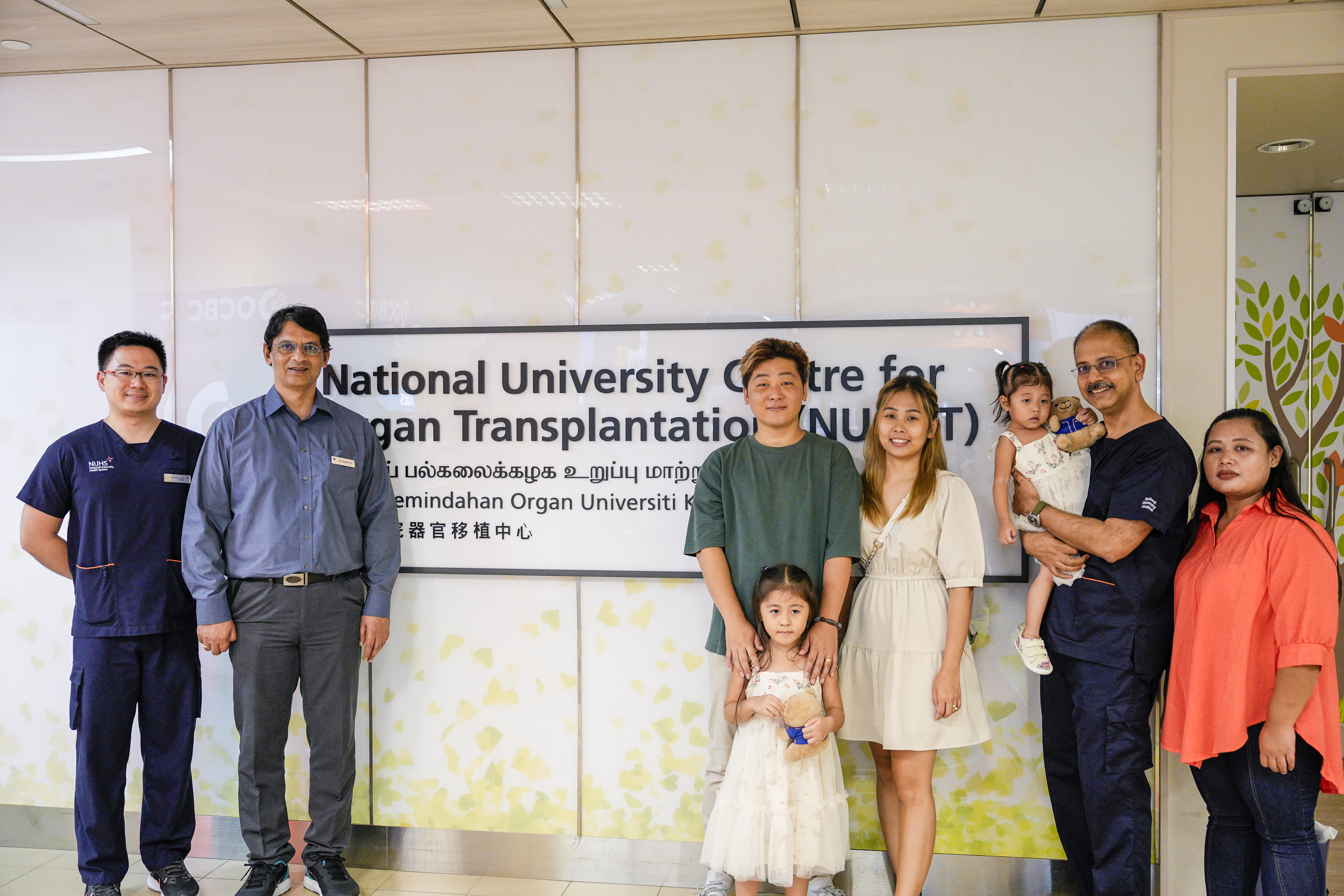
However, three in five children may still face progressive liver-related complications following a Kasai procedure. And unfortunately for Avira, a post-operative follow-up two months later revealed a progressive deterioration of her liver function.
This left just one viable course of action for Avira — a liver transplant.
Though Avira had a ready and willing liver donor in her mother, performing a transplant on a small child like her, who weighed less than 10kg, is often challenging and complex.
Factors such as the need for appropriately sized liver donor grafts, and the delicate nature of paediatric patients, add significant risks and technical difficulty to the procedure.
Dr Mali, who is also Surgical Director of the Paediatric Kidney and Liver Transplantation Programmes at NUCOT, explained, “When we perform a living donor liver transplant, we need to ensure that the donated liver is a good fit for the recipient’s body. If it’s too big and we try to squeeze it in, we can potentially end up damaging the liver.
“It’s not just the size, but also the shape of the liver, as the configuration can vary for each individual. So, we have to find a suitable match, and in Avira’s case, that was her mother’s liver.”
Due to her extremely small size, Avira needed to be on a feeding tube to gain weight before the transplant.
Under the care of Dr S. Venkatesh Karthik, Senior Consultant, Paediatric Liver Transplantation Programme, NUCOT, Avira gained about two kilograms in two months.
He elaborated, “Usually, the bigger the child, the better for the transplant. So, we try to help them gain weight as quickly and safely as possible, but we also have to balance this with the timeliness of the procedure. The ideal weight is around seven or eight kilograms, but if the transplant is needed urgently, we have no choice but to proceed.”
Avira’s surgeons also had to perform graft reduction on her mother’s donated liver to ensure it would be the right fit for her. Incorrectly estimating the size of the graft could prolong Avira's time on the operating table and increase the risk of graft damage.
To ensure the correct size of the graft for Avira, Dr Mali and his surgical team employed a hybrid technique involving mixed reality imaging, also known as ‘holomedicine’.
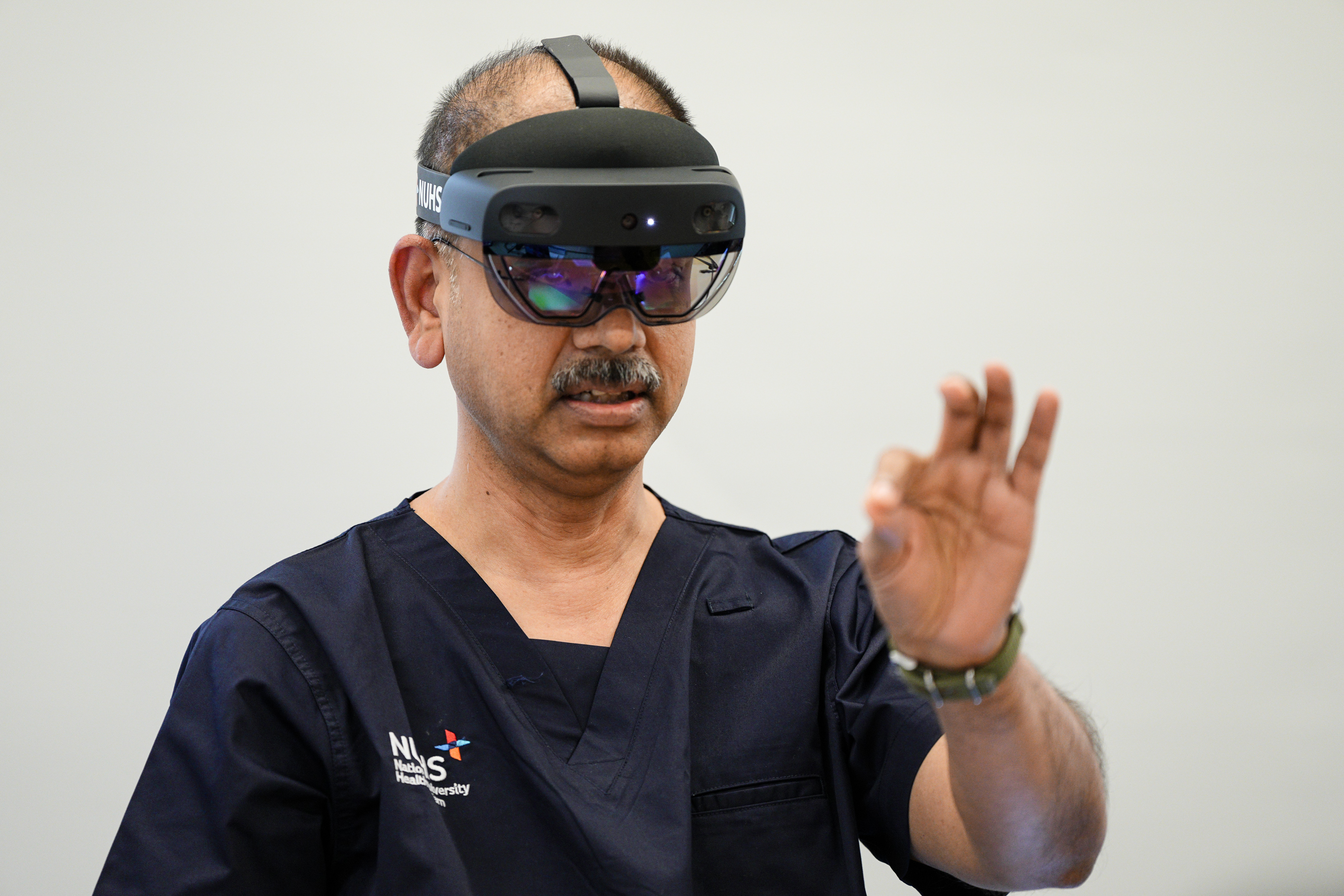
This innovative approach enabled the surgeons to create a 3D comparison between Avira's CT scan and that of the donor’s liver, thus providing them with a more precise estimation of how the liver would fit within Avira’s body.
“Traditionally, we can only see these scans on the computer screen. But this means we’re looking at a 3D object on a 2D screen,” explained Dr Gao Yujia, Consultant, Division of Hepatobiliary & Pancreatic Surgery, Department of Surgery, NUH, and the Assistant Group Chief Technology Officer leading the holomedicine programme at the National University Health System (NUHS).
“Holomedicine leverages mixed reality to interact with virtual objects that are superimposed onto the real world. So now, we can extract these CT scans onto the HoloLens, and we can see them as a 3D object… as holograms generated from the patient's own scans. This takes away a lot of the guesswork and estimation from the surgery.”
Dr Gao added that the HoloLens is a cluster-wide programme at NUHS that began three years ago. Since then, it has been used in over 140 surgeries across nine different specialties, including adult transplant, neurology surgery, heart surgery, and facial reconstruction surgery.
In Avira’s case, utilising holomedicine allowed Dr Mali and his team to perform a precise graft reduction on her mother’s liver.
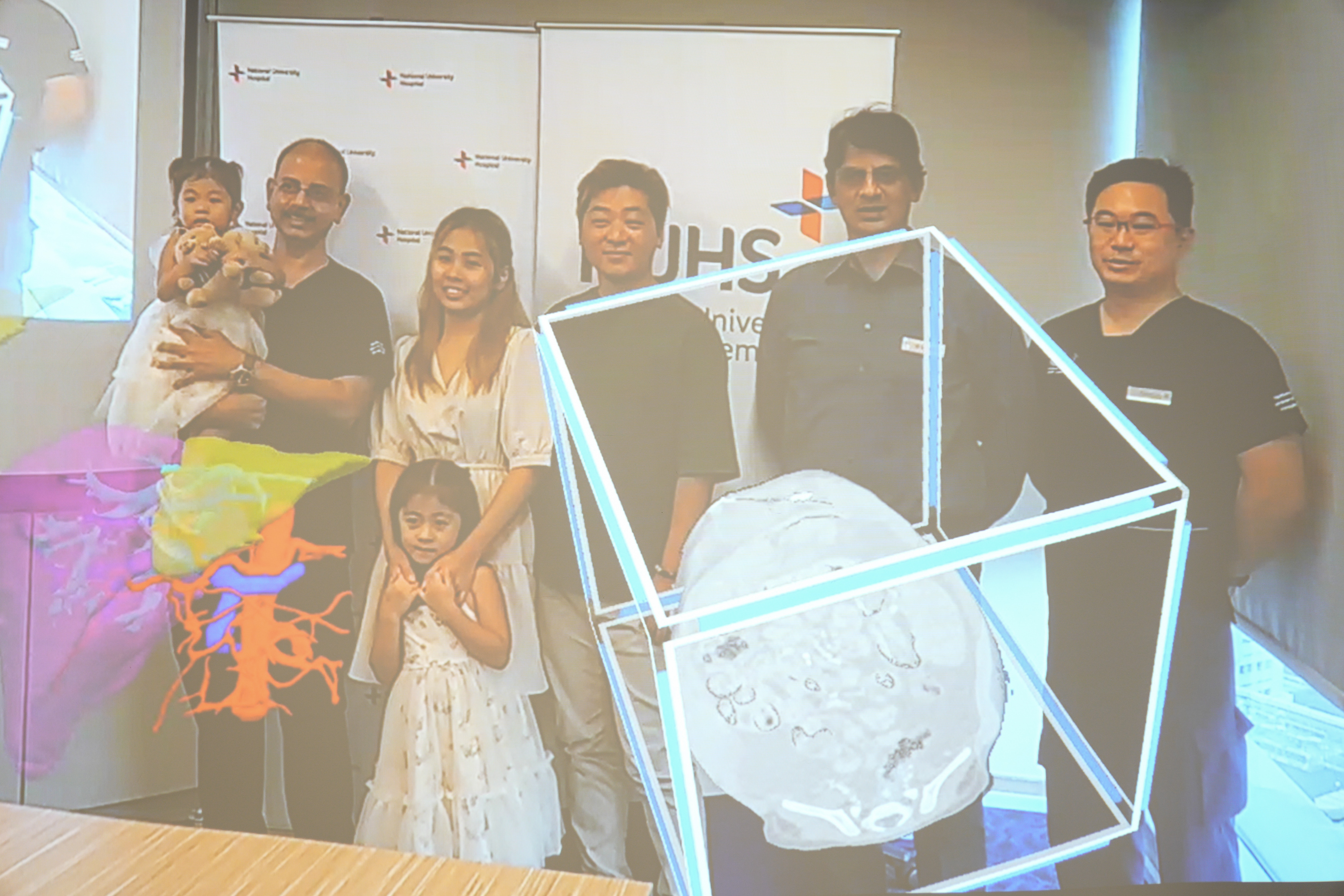
“This hybrid technique enhances surgical planning, giving us a solid road map with the potential of greater precision so that patient care and safety can be improved during the surgery itself,” said Dr Mali.
The transplant, which took place in July 2022, was successful, and both Avira and her mother have since made a full recovery. Today, Avira is much like other children her age, a playful and energetic toddler, with a bright future ahead.
As we celebrate World Transplant Day, we honour the courage of all transplanted children and their families. Through continuous innovation and compassionate care, NUCOT remains committed to transforming lives and offering hope to families navigating the complexities of organ transplantation.
In consultation with Dr Vidyadhar Mali, Surgical Director & Senior Consultant, Paediatric Kidney and Liver Transplantation Programmes, NUCOT, NUH, Dr S. Venkatesh Karthik, Senior Consultant, Paediatric Liver Transplantation Programmes, NUCOT, NUH, Dr Gao Yujia, Assistant Group Chief Technology Officer, NUHS.

